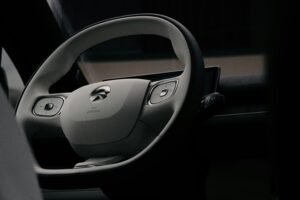The global automotive industry is witnessing a major design revolution—and Chinese car manufacturers are leading the charge. What was once a segment known for affordability and efficiency is now commanding attention for cutting-edge aesthetics, futuristic styling, and design-led innovation. From exterior elegance to digital branding, design is becoming a central force behind the rise of the Chinese car industry.
1. Chinese Car Companies Hire World-Class Designers

In recent years, Chinese car brands have made strategic moves to recruit world-class automotive designers. These top talents—often from brands like BMW, Audi, and Volvo—are helping reshape the visual identity of China’s auto industry.
For example, Geely brought in Peter Horbury, former Volvo design chief, to lead a new design language blending Scandinavian minimalism with Chinese sensibilities. Likewise, BYD hired Wolfgang Egger, formerly of Audi and Alfa Romeo, to create sleek, futuristic designs that rival Europe’s best.
These designers are not only working in China but also in global design studios in Munich, Milan, and Los Angeles—elevating the Chinese car aesthetic to an international level.
2. Design Innovation Is Changing the Perception of Chinese Cars

The design transformation has done more than just improve looks—it has redefined how people see the Chinese car. No longer associated with low-cost or copycat styling, today’s Chinese vehicles offer modern, premium, and sometimes avant-garde design that competes on the global stage.
When consumers see a NIO ET7 or XPeng P7, they’re struck by their streamlined silhouettes, bold LED lighting, and sculpted surfaces. These models convey confidence and originality, presenting the Chinese car as not just functional, but fashionable.
This evolution is changing public perception at home and abroad. Chinese cars are no longer seen as imitators—they’re innovators.
3. Chinese Car Brands Prioritize Design as a Strategic Element

Design is no longer just a finishing touch—it’s a pillar of Chinese car development strategy. Leading Chinese automakers are placing designers in key decision-making roles, allowing design to influence everything from product development to customer experience.
In BYD’s latest models, this strategy is evident. The brand has embraced a clean, cohesive design language that fuses technology with elegance. Its Han EV and Seal models boast sleek silhouettes, panoramic interiors, and minimalist dashboards that rival luxury brands. BYD’s commitment to sustainable materials, digital cockpit integration, and intuitive user interfaces reinforces its status as a global design leader in the EV space.
Beyond vehicle interiors, BYD is also investing in branded environments—from futuristic showrooms to immersive test-drive experiences—where design tells a consistent story of innovation and refinement. For BYD and other top brands, design is more than style; it’s strategy.
4. Graphic Design Strengthens the Chinese Car Brand Identity

While industrial design shapes the physical car, graphic design plays a crucial role in building the Chinese car brand identity. Logos, typography, color schemes, user interfaces, and visual content are crafted to convey clarity, confidence, and high-tech elegance.
Polestar, though rooted in Scandinavian design, is a perfect example of how Chinese-backed automakers use graphic design to convey a distinct identity. Owned by Geely, Polestar combines minimalist branding with sharp visual language across every customer touchpoint—from its sleek monochrome logo to its clean UI design and editorial-style website. The consistent use of white space, sans-serif typography, and cinematic visuals reflects its premium, future-forward positioning.
In an age where digital presence matters as much as the physical product, strong graphic design gives Chinese car companies an essential competitive edge.
5. The Future of Chinese Car Design: Emotional, Digital, Global

As the industry shifts toward electric and autonomous mobility, design will become an even more powerful differentiator for Chinese cars. Without the traditional constraints of internal combustion engines, designers have more freedom to innovate on shape, layout, and user experience.
This has opened the door to unique silhouettes, floating dashboards, voice-controlled lighting, and fully digital cockpits. These aren’t science fiction—they’re features already being explored by brands like NIO, BYD, and AITO.
What sets the Chinese car industry apart is its speed and willingness to break conventions. Unlike legacy automakers bound by tradition, Chinese brands are agile, experimental, and driven by the aesthetics of the future.
And consumers around the world are taking notice. In Southeast Asia, Europe, and the Middle East, Chinese cars are gaining popularity not only for their affordability and technology but also for their design. Sleek styling and cohesive branding are helping them stand out in crowded markets.
Conclusion: Chinese Car Design Is Driving a Global Shift
Design is no longer a secondary consideration—it’s the engine behind the global rise of the Chinese car. From international design hires to immersive brand storytelling, China’s automakers are showing that good design drives trust, desire, and value.
The Chinese car of today is stylish, smart, and ready for the world. As the industry evolves, design will remain a key asset in shaping the future of mobility—not just for China, but for the entire global market.
Power Your Automotive Vision with Layerice Graphic Design
If you’re a car brand, EV startup, or mobility visionary looking to elevate your visual identity, Layerice Graphic Design is here to drive your creative direction forward. With a deep understanding of automotive aesthetics and a zen-modern approach to branding, Layerice helps bring clarity, elegance, and edge to every touchpoint—from vehicle UI to digital storytelling.





